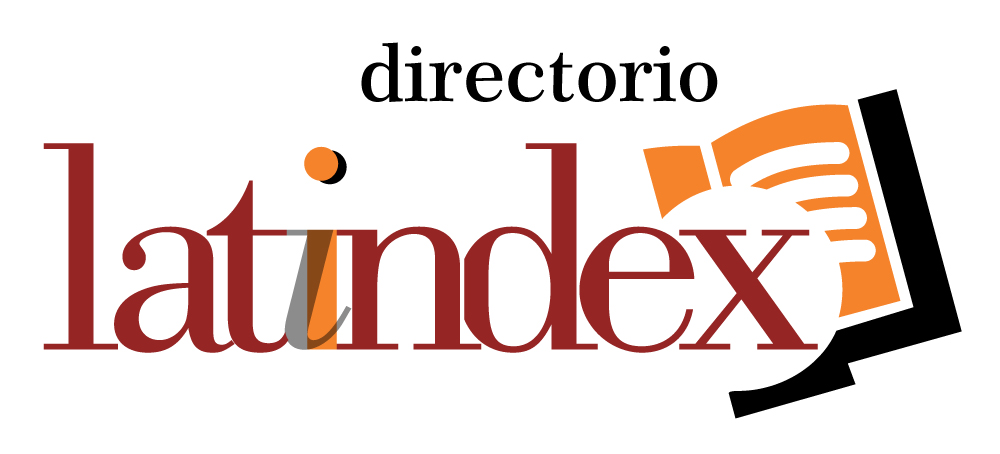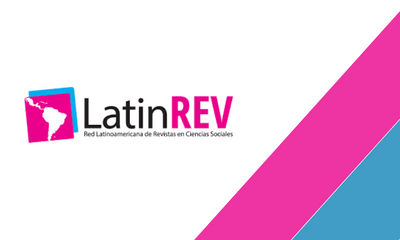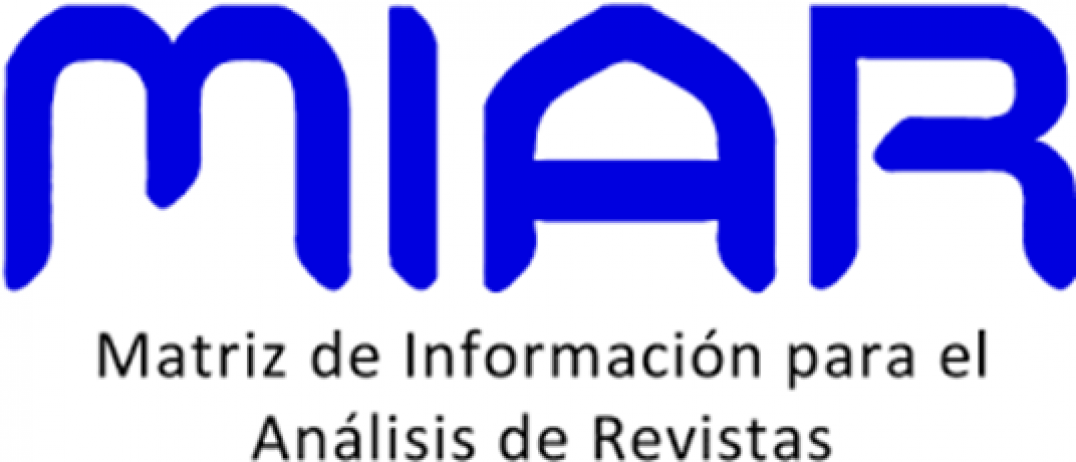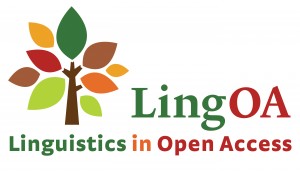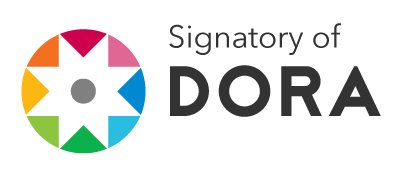Proposte
Lista di controllo per la predisposizione di una proposta
Durante la procedura di trasmissione di una proposta, gli autori devono verificare il rispetto dei seguenti requisiti; la submission potrebbe essere rifiutata se non aderisce a queste richieste.- Il testo rispetta i requisiti stilistici e bibliografici indicati nelle Linee guida per gli autori, che appaiono in About the journal.
Ensayos
Esta sección es para ensayos académicos. Todas las postulantes serán procesadas a doble ciego. Todas las postulantes deberán cumplir con los lineamientos de ensayos.
Artículos
Esta sección es para artículos académicos. Todas las postulantes serán procesadas a doble ciego. Todas las postulantes deberán cumplir con los lineamientos de artículos.
Reseñas
Esta sección es para reseñas académicos. Todas las postulantes serán procesadas a doble ciego. Todas las postulantes deberán cumplir con los lineamientos de reseñas.
Entrevistas
Esta sección es para entrevistas académicas. Todas las postulantes serán procesadas a doble ciego. Todas las postulantes deberán cumplir con los lineamientos de entrevistas.
Informativa sui diritti
Políticas Editoriales: Derechos de Autor y Propiedad Intelectual
1. Declaración de Originalidad y Prepublicación Los autores que presenten manuscritos a Verbum et Lingua garantizan que sus trabajos son originales e inéditos, y que no han sido publicados previamente en ninguna forma ni se encuentran en proceso de revisión en otra publicación.
-
Preprints: Verbum et Lingua permite a los autores depositar versiones previas de sus manuscritos (preprints) en repositorios abiertos antes de la revisión por pares. Si un preprint es publicado posteriormente en Verbum et Lingua, se requiere que los autores actualicen la información del preprint con un enlace a la versión final publicada, indicando claramente la referencia completa de la publicación en Verbum et Lingua.
2. Plagio y Publicación Redundante Verbum et Lingua se adhiere a las más estrictas normas éticas contra el plagio y la publicación redundante (autoplagio, duplicación de contenido, etc.). Todos los manuscritos serán sometidos a herramientas de detección de similitud. Cualquier forma de plagio o publicación redundante será motivo de rechazo del manuscrito.
3. Derechos de Autor y Licencia de Publicación De acuerdo con la legislación de derechos de autor, Verbum et Linguareconoce y respeta el derecho moral de los autores sobre sus obras. El derecho patrimonial será cedido a la Universidad de Guadalajara para su difusión bajo una licencia de acceso abierto.
Los artículos publicados en Verbum et Lingua se distribuyen bajo una licencia Creative Commons Atribución-NoComercial 4.0 Internacional (CC BY-NC 4.0). Esto significa que los autores conservan los derechos de autor de su trabajo y otorgan a Verbum et Lingua el permiso de publicar el artículo bajo esta licencia, lo que permite a terceros copiar y redistribuir el material en cualquier medio o formato, siempre que se dé crédito al autor original y a Verbum et Lingua, y que el uso no sea para fines comerciales.
4. Acuerdos de Distribución Adicionales Los autores pueden realizar otros acuerdos contractuales, independientes y adicionales, para la distribución no exclusiva de la versión del artículo publicado en Verbum et Lingua (por ejemplo, incluirlo en un repositorio institucional, en el sitio web personal del autor, o darlo a conocer en otros medios en papel o electrónicos). En todos estos casos, es imprescindible que se indique clara y explícitamente que el trabajo se publicó por primera vez en Verbum et Lingua, proporcionando la referencia bibliográfica completa.
5. Costos de Publicación Verbum et Lingua es una revista de acceso abierto que no cobra a los autores por el envío, procesamiento o publicación de sus artículos (Article Processing Charges - APCs). La publicación en Verbum et Lingua es completamente gratuita para los autores.
---------------------------------------------------
DECLARACIÓN DE PRIVACIDAD
Los nombres y direcciones de correo electrónico proporcionados a esta revista se utilizarán exclusivamente para los fines establecidos en ella y no se compartirán con terceros ni para otros propósitos.
Consulte la política de privacidad de la Universidad de Guadalajara para más detalles: http://www.udg.mx/es/info/politica-de-privacidad-y-manejo-de-datos
ORIGINALIDAD Y PLAGIO
Los autores se comprometen a que el trabajo enviado a la revista sea original e inédito.
-
Original: Un manuscrito es original cuando es producto de la autoría de quien lo envía, sin derivar significativamente de trabajos propios o ajenos; supone una idea no concebida con anterioridad.
-
[Descargue y firme la Carta de Originalidad aquí.](Declaración de originalidad - VeL)
-
-
Inédito: Un manuscrito es inédito cuando no se ha dado a conocer en ningún otro formato o medio (ej., tesis, ponencias, etc.).
Verbum et Lingua rechaza categóricamente las conductas inaceptables y malas prácticas de publicación, sean voluntarias o involuntarias. Estas incluyen:
-
Plagio: Apropiación del trabajo o ideas de otra persona, sin darle el crédito correspondiente.
-
Autoplagio: Presentación de trabajos propios anteriores como productos novedosos u originales.
-
Publicación duplicada: Presentación simultánea del mismo trabajo a dos revistas o medios editoriales diferentes.
-
Publicación parcial: Fragmentación de un mismo trabajo de investigación en diversas publicaciones.
-
Falsificación o fabricación de datos.
Utilizamos el software iThenticate para la detección de plagio en los textos recibidos. Consideramos un texto inédito y aceptable cuando supera el 80% de originalidad (es decir, la similitud es menor al 20%).
Todas las fuentes de información deben ser citadas. Los autores deberán incluir las referencias correspondientes al autocitarse (máximo tres autocitas en total por todos los autores) de textos ya publicados, con la condición de que sean pertinentes para generar nuevos aportes al campo de conocimiento, y no para reciclar ideas de trabajos anteriores.
No se debe repetir total ni parcialmente un estudio (propio o ajeno) con los mismos datos, hipótesis, puntos de discusión y conclusiones. Se debe evitar el reciclaje de trabajos previos y presentarlos como nuevas propuestas. Los autores tienen la responsabilidad de informar sobre cualquier manuscrito relacionado, publicado o no, incluso si está en un idioma diferente.
Los autores deben respetar la propiedad intelectual y dar el crédito correspondiente al trabajo de otros, indicando la fuente de toda la información que provenga de terceros (publicada o no).
Autoría
El manuscrito debe ser redactado con precisión y objetividad, basándose en la veracidad de la información y los datos contenidos. Todos los colaboradores deben haber participado en la concepción del manuscrito.
El límite es de tres coautores. El número de coautores no podrá modificarse una vez enviado el trabajo a la plataforma.
Para promover buenas prácticas editoriales, no se publicarán dos artículos bajo la misma autoría en la convocatoria vigente de la revista, ni se duplicará a ningún autor en números consecutivos de Verbum et Lingua. Será necesario esperar un período de recepción de investigaciones antes de una nueva publicación del mismo autor.
Solidez y Fiabilidad
Los autores deben considerar las observaciones y solicitudes de los dictaminadores para la modificación de sus artículos. Las objeciones a las indicaciones de los dictaminadores deben ser respondidas de manera puntual, clara y justificada.
Si un autor detecta un error en su artículo, deberá informar inmediatamente al editor de la revista para su rectificación.
El trabajo no deberá haber sido influenciado por ningún interés personal, comercial, religioso, político, académico o financiero. Los autores deberán informar explícitamente cualquier financiación recibida para la realización del artículo de investigación.
Para más información sobre la gestión del plagio y las buenas prácticas, consulte el diagrama de flujo de COPE: https://publicationethics.org/files/Spanish%20%281%29.pdf
Informativa sulla privacy
I nomi e gli indirizzi email inseriti in questo sito della rivista saranno utilizzati esclusivamente per gli scopi dichiarati e non verranno resi disponibili per nessun altro uso.




